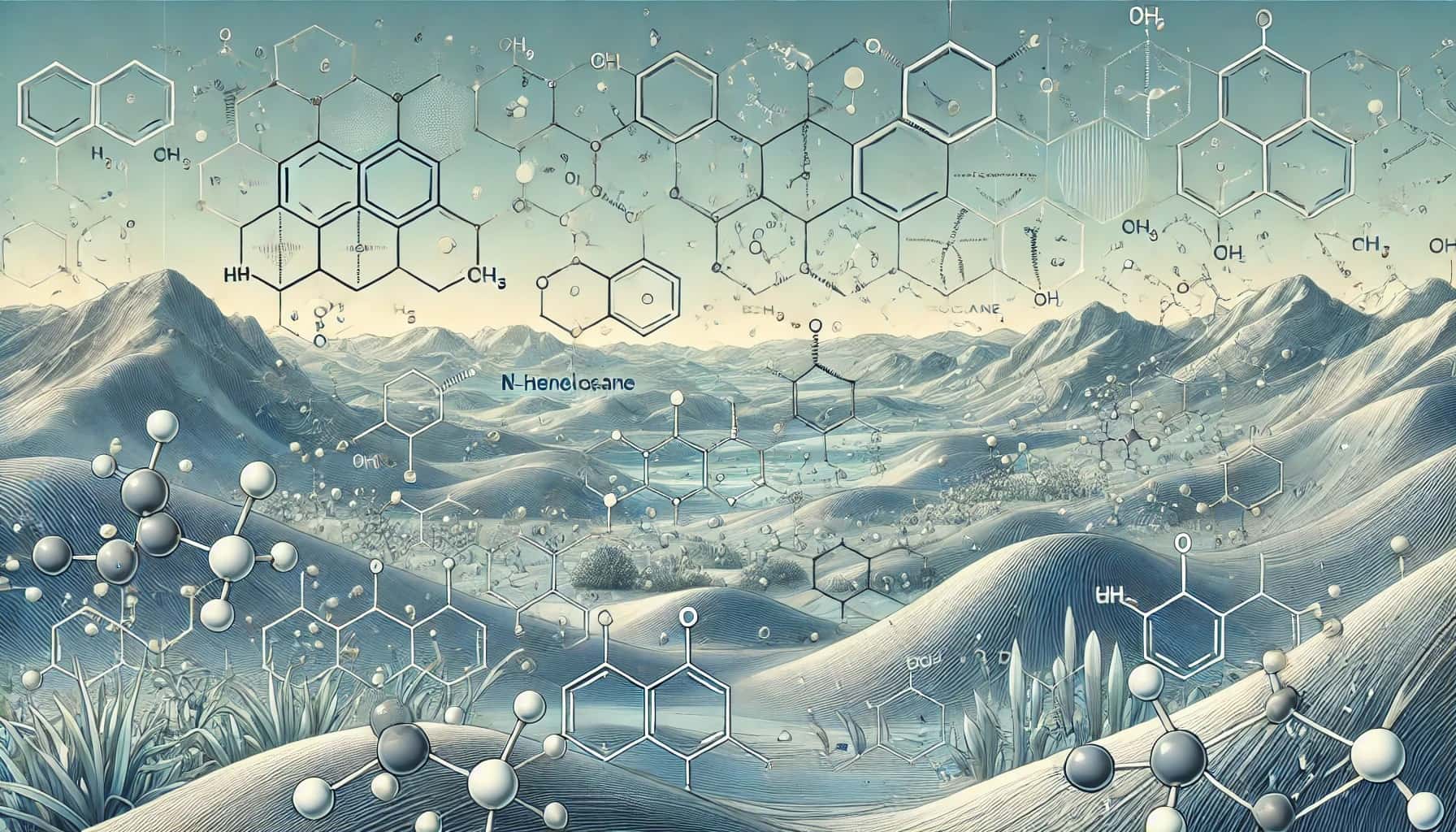
What is n-Heneicosane? n-Heneicosane is a straight-chain alkane with the chemical formula C21H44. This hydrocarbon consists of 21 carbon atoms and 44 hydrogen atoms, making it a member of the paraffin series. Found in various natural sources, including plants and insects, it plays a role in the chemical communication of some species. Its waxy texture and high melting point make it useful in industrial applications such as lubricants and coatings. Understanding n-Heneicosane can provide insights into both organic chemistry and practical uses in everyday products. Ready to learn more? Here are 15 intriguing facts about this fascinating compound.
What is n-Heneicosane?
n-Heneicosane is a straight-chain alkane with 21 carbon atoms. It's a hydrocarbon found in various natural sources and has interesting properties.
-
Chemical Formula: The chemical formula for n-Heneicosane is C21H44. This means it consists of 21 carbon atoms and 44 hydrogen atoms.
-
Molecular Weight: n-Heneicosane has a molecular weight of approximately 296.58 g/mol. This makes it relatively heavy compared to smaller alkanes.
-
Appearance: In its pure form, n-Heneicosane is a white, waxy solid. It can be found in nature as part of the waxy coatings on plants and insects.
Sources of n-Heneicosane
n-Heneicosane is not just a lab-made chemical. It occurs naturally in various environments.
-
Plant Waxes: Many plants produce n-Heneicosane as part of their protective waxy coatings. This helps prevent water loss and protects against pests.
-
Insect Cuticles: Some insects have n-Heneicosane in their cuticles. It plays a role in waterproofing and protecting their bodies.
-
Petroleum: n-Heneicosane can also be found in crude oil. It's one of the many hydrocarbons present in this complex mixture.
Uses of n-Heneicosane
This hydrocarbon has several practical applications, thanks to its unique properties.
-
Lubricants: n-Heneicosane is used in the production of lubricants. Its waxy nature helps reduce friction between moving parts.
-
Cosmetics: In the cosmetics industry, n-Heneicosane is used in formulations for creams and lotions. It helps create a smooth texture and provides moisturizing properties.
-
Research: Scientists use n-Heneicosane in various research applications. Its well-defined structure makes it useful for studying hydrocarbon behavior.
Physical Properties of n-Heneicosane
Understanding the physical properties of n-Heneicosane helps in its practical applications.
-
Melting Point: n-Heneicosane has a melting point of around 40-42°C (104-107.6°F). This relatively low melting point makes it useful in applications requiring a solid at room temperature but a liquid at slightly higher temperatures.
-
Boiling Point: The boiling point of n-Heneicosane is approximately 368°C (694.4°F). This high boiling point indicates its stability at elevated temperatures.
-
Solubility: n-Heneicosane is insoluble in water but soluble in organic solvents like benzene and chloroform. This property is typical of hydrocarbons.
Environmental Impact of n-Heneicosane
Like many chemicals, n-Heneicosane can affect the environment in various ways.
-
Biodegradability: n-Heneicosane is biodegradable. Microorganisms can break it down, reducing its environmental impact over time.
-
Ecotoxicity: In large quantities, n-Heneicosane can be harmful to aquatic life. However, its natural occurrence in small amounts typically poses minimal risk.
-
Pollution: As a component of petroleum, n-Heneicosane can contribute to pollution if not managed properly. Spills and leaks can release it into the environment, where it can persist for some time.
Final Thoughts on n-Heneicosane
n-Heneicosane, a fascinating hydrocarbon, plays a crucial role in various fields. Found in beeswax, it helps bees maintain hive structure. This compound also appears in plant cuticles, aiding in water retention and pest resistance. Its presence in some insects acts as a pheromone, influencing behavior and communication.
In the industrial world, n-Heneicosane serves as a reference material in chromatography, ensuring accurate results in chemical analysis. Its unique properties make it valuable in research and development, contributing to advancements in science and technology.
Understanding n-Heneicosane's diverse applications highlights its importance beyond just a chemical compound. From nature to industry, this hydrocarbon proves its worth in multiple ways. Keep these facts in mind next time you encounter n-Heneicosane, appreciating its role in both natural and scientific realms.
Was this page helpful?
Our commitment to delivering trustworthy and engaging content is at the heart of what we do. Each fact on our site is contributed by real users like you, bringing a wealth of diverse insights and information. To ensure the highest standards of accuracy and reliability, our dedicated editors meticulously review each submission. This process guarantees that the facts we share are not only fascinating but also credible. Trust in our commitment to quality and authenticity as you explore and learn with us.


